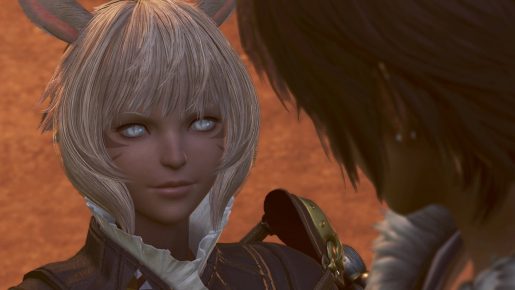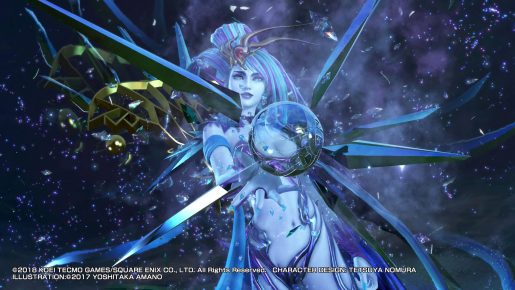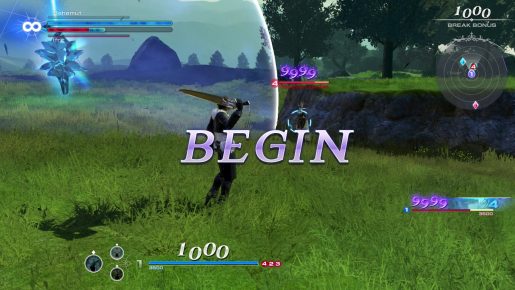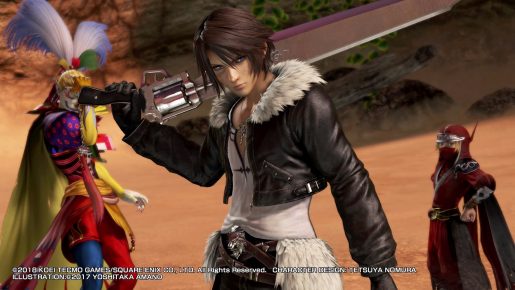Versatility is part of what makes Final Fantasy so special. The characters and themes work in practically any genre, so it made sense for fans to ask for a fighting game. This led to the creation of Dissidia, a somewhat popular, mostly portable, fighting game that included practically every noteworthy character in Final Fantasy. Years later the franchise is back with Dissidia Final Fantasy NT. Is this sequel enough to redeem the fighting game series or is it banking on fans love of Squall, Cloud and the rest?
Dissidia Final Fantasy NT has one of the oddest story modes out there. The story is presented as a chart, with multiple branching paths, that focus on different characters. What makes it so unusual is you can’t actually play the campaign, per se, instead you need to play other activities, earn memoria and then redeem said memoria for a cutscene and/or battle. This process continues until you lose interest or unlock everything.
Even if the process is more complicated than it needs to be, the story itself hinges on how much you enjoy the characters. Team Ninja took the time to ensure there is at least one scene that showcases each characters’ traits and that can be fun, even if the basic premise is tired and everyone, even Dissidia Final Fantasy NT, is aware of it.
In addition to having an unusual story mode, Dissidia Final Fantasy NT’s combat is equally weird. The best way to describe it would be tug of war with the ability to bank and utilize points. Each teams goal is to defeat however many opponents before time expires. This is done by collecting points, which can be earned by hitting enemies, with certain tasks giving a bonus and characters almost always returning to 1,000 points. The idea is to collect some points, do a different attack and anyone hit with that attack will lose however many points you had of HP.
If it sounds complicated, it really isn’t, at least on a conceptual level. Each of the characters are divided by type, so some are range, others quick attackers and so forth, with a couple of attacks, resulting in about as much variety as a Dynasty Warriors-esque game. From there, players can use various types of magic, use one of the iconic summons and change the damage dealing attack. This means most matches will boil down to utilizing the same combo until it’s time to deal damage.
Knowing when to strike, along with unlocking all the attacks and the best build for each fight. For instance, the more points you have, the faster you’ll lose them, but hitting multiple opponents is a great way to build momentum, making it all about luck and experience. This also makes the included tutorial a great way to understand the basics, but offer little to no help in improving.
Getting better is an important part of Dissidia Final Fantasy NT, since even the AI can be inconsistently difficult. Since friendly AI’s ability is determined by their rank, something that increases by playing, it isn’t uncommon for enemy AI to overwhelm them and result in you losing, regardless of how well you play. It also makes it easy for the AI to team attack you, resulting in an unenjoyable experience. Especially since there is a massive increase in difficulty at higher ranks.
Arguably the worst part of Dissidia Final Fantasy NT is the lack of meaningful content. Since story mode is largely just cutscenes, broken up by some pretty difficult fights, offline players are limited to gauntlet and sparring modes. Gauntlet is essentially just arcade, where you fight a number of different teams and either win or lose. Difficulty increases as you play better, though it’s possible to remain at a low level if you always opt for the easiest option or perform poorly. There are also other modes based off things in story, though they all follow the same approach. Sparring is just player matches, so you can pick whomever and duke it out. Online is simply fighting various other player controlled characters to see which team is best.
In fact, most of the content comes from a cycle of unlocks. Playing levels characters, memoria, unlocks treasures and gives you cash, which slowly grants access to more options. These include different weapons, costumes, avatars, character comments, story, AI skill, starting difficulty, different skills/powers/perks/etc. This means most of the time spent will be unlocking the other options that make the game more enjoyable, which is good, assuming you’re around long enough to see them or master the controls.
Despite the negativity, Dissidia Final Fantasy NT is a beautiful game. Characters look great, the animations are fantastic and the worlds are stunning to look at. The same holds true for music, something Final Fantasy is known for, making every battle feel all the more epic. It’s a shame the gameplay is so simple with few modes to play with, but if you’re a massive fan of the franchise or just want a fun party fighter to play, it’s a solid choice. Other than that, it’s a good game, just not a great one.
[Editor’s Note: Dissidia Final Fantasy NT was reviewed on PS4 platform. The game was provided to us by the publisher for review purposes.]




